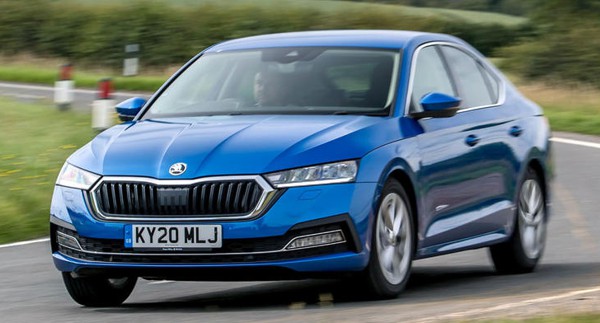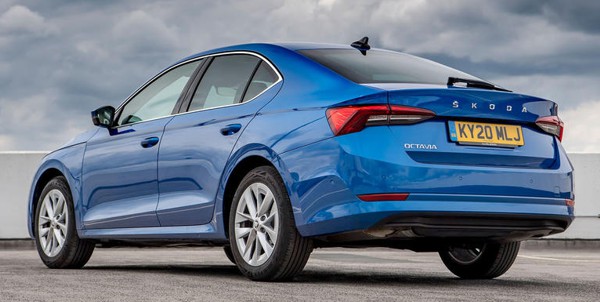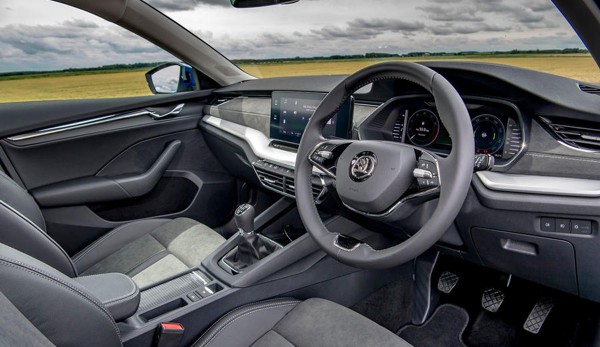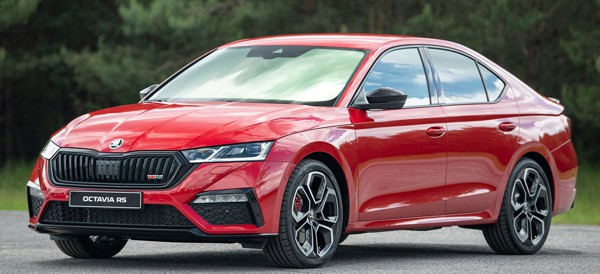Published
on 4
Mar 2021
|
All rights reserved.
|
|
|

|
|
The
Skoda is unbeatable for value for money.
|
|
Over the last couple of
years, sales of Octavia slid a bit, blame to the increased product
diversity and especially the introduction of more crossovers, but it
still registered 364,000 sales globally in 2019, maintaining the top
seller status in Skoda's range. The Octavia was first introduced in
1996 as a
spin-off from the Volkswagen Golf platform. Benefited with the lower
production costs in Czech Republic, it utilizes the classy components
of Golf to realize superior value for money. On the one hand it
achieves 90 percent of the build quality and engineering excellence of
VW. On the other hand it offers more space and practicality for less
money. This winning formula continues to prosper in the 4th generation
car shown here.
The new Octavia is once again built on the MQB platform, although like
Golf Mk8 this is an evolution of the original MQB. All the hardpoints
are maintained, as is the unchanged wheelbase of 2686 mm. It gets a
little longer and wider, but the best news is a sleeker exterior design
that finally turns the Octavia closer to an Audi than a lunchbox.
Despite the deliberately angular front grille and headlights, the body
shape is actually quite wind-cheating, no wonder drag coefficient is
lowered to a remarkable 0.24, one of the lowest in the world. However,
don't be fooled by its 3-box shape, as the Octavia remains a hatchback,
offering better luggage versatility yet the long trunk swallows 600
liters of luggage, easily topping the class. In comparison, the Golf’s
380-liter boot seems tiny. There is also an estate body called Combi,
which offers even more luggage space.

|
|
The best news
is a sleeker exterior design that finally turns the Octavia closer to
an Audi than a lunchbox.
|
|
The Octavia shares a full range of engines with Golf Mk8:
- 1.0TSI 3-cylinder turbo, 110hp (48V mild-hybrid is optional);
- 1.5TSI turbo ACT, 150hp (48V mild-hybrid is optional);
- 2.0TSI turbo, 190hp;
- 2.0TDI turbo diesel, 116hp or 150hp;
- 1.5TSI CNG, 130hp;
- 1.4TSI plug-in hybrid with 13kWh battery, 204hp combined (= Golf
eHybrid).
Besides, performance model vRS has 3 engine options mirroring Golf as
well:
- 2.0TSI turbo, 245hp (= Golf GTI);
- 2.0TDI turbo diesel, 200hp (= Golf GTD);
- 1.4TSI plug-in hybrid with 13kWh battery, 245hp combined (= Golf GTE).
Transmission choices include 6-speed manual and 7-speed DSG,
predictably.
There are 3 suspension options: standard, sport (15mm lower and
stiffer) and adaptive dampers. Bread-and-butter models are served with
only torsion-beam rear suspension, while 150hp 2.0TDI, all plug-in
hybrid and vRS models get a multi-link setup.

|
|
Spacious,
high-quality feeling and slightly easier to use than Golf.
|
|
However, the
highlight remains to be its interior. It is incredibly spacious for a
C-segment car, offering class-leading rear seat accommodation. There
are also a lot of in-cabin storage cubbies and even 5 USB-C ports for
your convenience. Moreover, build quality has improved markedly in this
generation, closing the gap from Volkswagen significantly. The dash top
and door panels are soft-touch plastics, the rest covered with stitched
Alcantara. The seats are comfy. The “Virtual Cockpit” TFT instrument
and large center touch screen look classy. Moreover, it is offered with
much the same safety features as the Golf, such as predictive cruise
control. However, it shares also the ergonomics flaws of Golf Mk8, in
particular the touch-sensitive volume slider which is difficult to
operate on the move. The lack of hardware switch knobs for air-con and
audio also makes life more difficult than it used to be. At least,
Skoda improves from the Golf by turning the touch-sensitive buttons on
steering wheel to physical switches, so you are unlikely to switch on
something unintentionally.
The Octavia drives well, too. Undoubtedly, its chassis tuning majors on
comfort, so it rides smoothly on all but the worst surfaces,
accompanied with light steering and clutch for easy driving. It is
refined on motorway, with the 1.5TSI engine working quietly and other
noise sources well suppressed. This engine is also willing to pull and
proved to be remarkably frugal. In terms of driver appeal, it is not as
strong as the likes of Ford Focus and Mazda 3, of course. While it
offers good grip and stability, the steering is not exactly sharp or
feelsome, and the body control could be tighter. But let’s face it, it
fulfills the expectation for 90-percentile drivers and exceeds their
expectation for comfort and practicality.

|
|
vRS blends fine
dynamics perfectly with everyday usability.
|
|
As for the vRS
performance models, only the petrol 2.0TSI is worth recommendation.
Although the 200hp diesel is also very quick in the real world, only
the 2.0TSI has the VAQ active differential from the Golf GTI. As a
result, the petrol vRS can put down its power cleanly in corners,
allowing you to push it as hard as you would in typical hot hatches.
All vRS models get the 15mm lower sport suspension and a quicker ratio
steering rack, but again the lightest petrol model put them to the best
use, displaying decent agility and control. The plug-in hybrid called
vRS iV is the worst here, as it carries another 180kg of weight.
Moreover, once its battery runs out, you get only a 150hp engine
hauling 1620kg of car. The petrol vRS is certainly not going to
threaten the likes of Civic Type R, Megane RS, i30N or Focus RS for
speed and driving thrills, but like the rest of the Octavia range, it
is a remarkably good package, blending fine dynamics perfectly with
everyday usability yet costing less than most rivals. Performance model
or not, the Skoda is unbeatable for value for money.
|
Verdict:     |
|